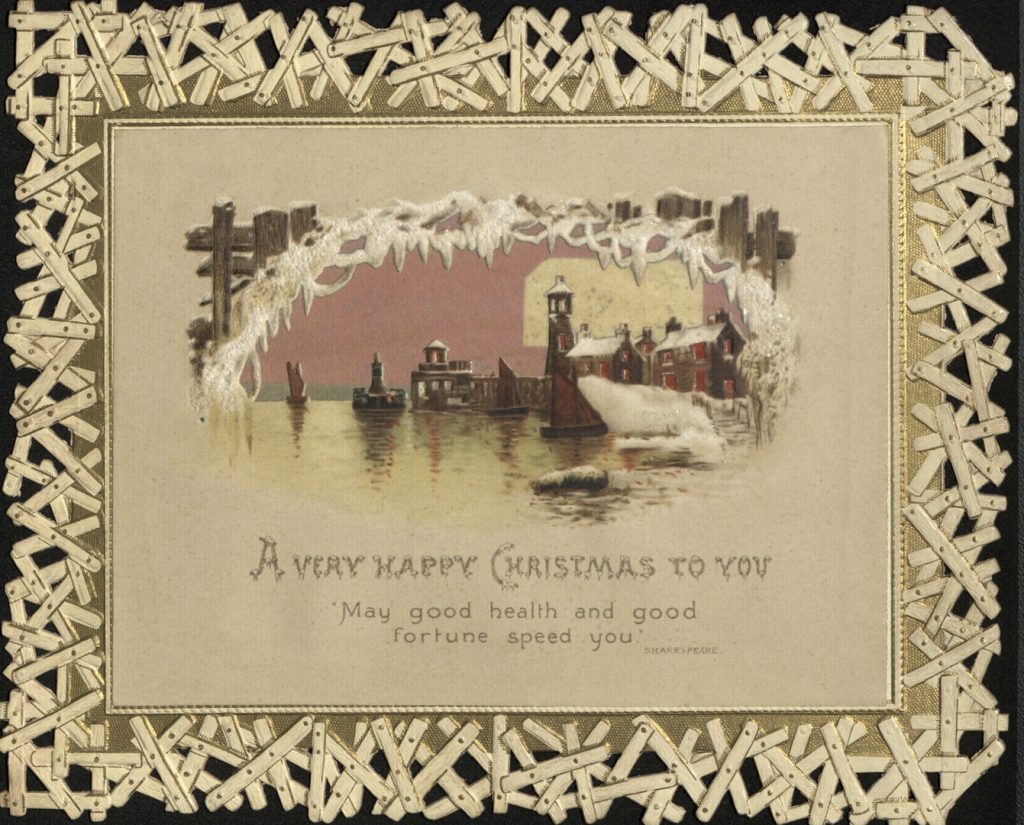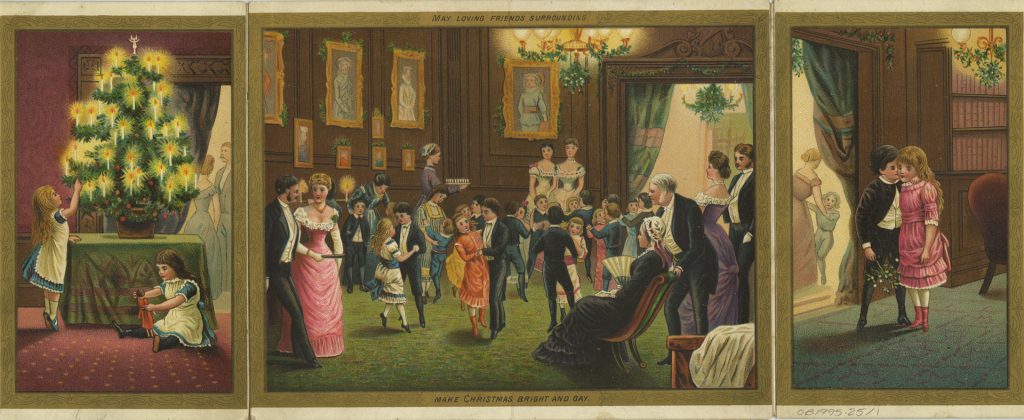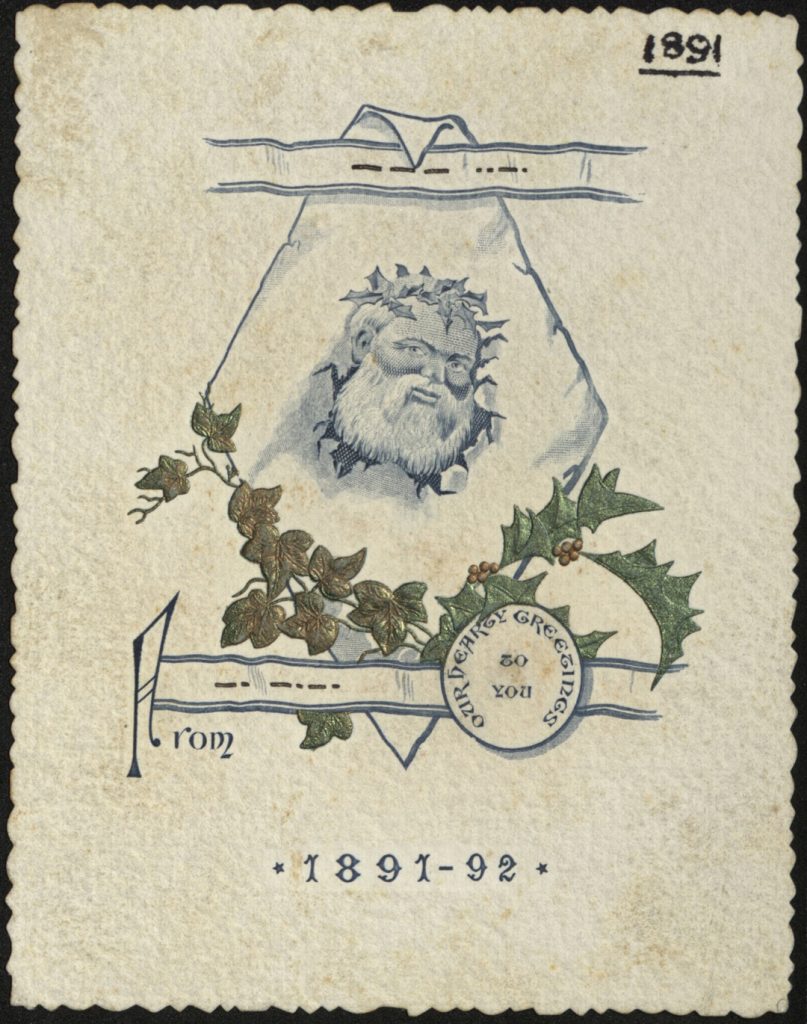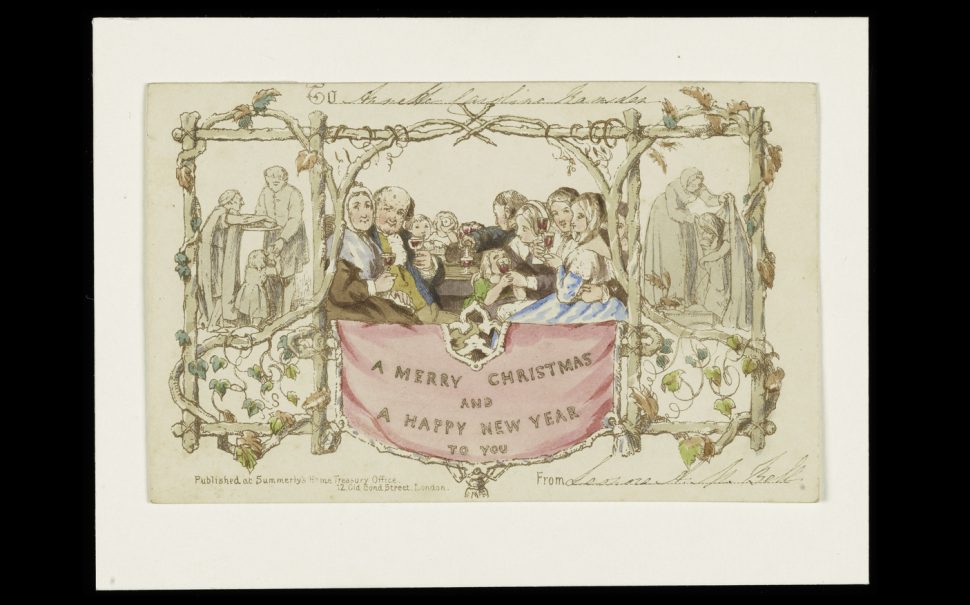This Christmas marks the 180th anniversary of the first ever Christmas card, commissioned by Sir Henry Cole in 1843.
The card depicts a family gathered around a table for a meal, as well as charitable acts of feeding and clothing the poor.
It was designed by the painter John Callcott Horsley, and printed in a run of 1000 cards for Sir Henry Cole, who gave them out to his friends and family before selling the remaining stock for one shilling each.
Joanna Espin, a curator at The Postal Museum where one of the original cards is displayed, said: “You can see, through the development of Christmas card design, how Christmas itself was being understood, and people becoming more familiar with how to actually celebrate it.”

1843 was also the year that A Christmas Carol was first published, which formed a big part of how people understood the holiday.
In 1840, the penny post had also been introduced, making it easier and cheaper for people to send cards to one another.
Joanna said: “It was the perfect storm; the material culture around Christmas was really developing in this Victorian period.
“Lots of things we know of today as being very Christmassy were still being worked through.
“People were working out how to celebrate with the new technologies that were available.
“The new, growing middle class had disposable income to buy things to celebrate Christmas with.
“The Christmas record also came about in this period.”

However, the second Christmas card did not reach the market until a few years later, and it took until 1877 for them to really take off: that year, 4.5 million additional letters were sent around Christmas, with a large portion sent on Christmas Day itself.
By 1879, that figure had doubled to 9 million additional letters, totalling 3.5 tonnes of extra post.
Joanna said: “It was like a runaway train by that point.
“There was no stopping it.”
Although Sir Henry Cole’s first card featured a family at the table, a lot of early Christmas cards were decorated with flowers, while religious images only made up a very small proportion of designs.

Cards also benefited from improvement to printing and manufacturing methods.
Joanna said: “You can see all these different types of printing processes coming up in Christmas cards: you have scented Christmas cards manufactured by Rimmel and many mechanical elements where you can move parts of the cards and cards in different shapes.
“As manufacturing techniques made the price come down, and as the popularity of Christmas more generally increased, that’s how cards became so successful.”
As well as the very first Christmas design, The Postal Museum’s collection includes hundreds of other Victorian cards.





Join the discussion